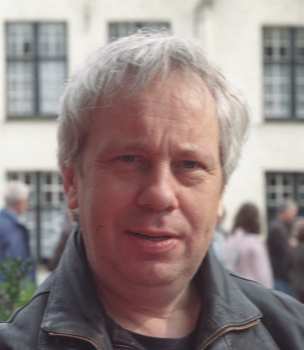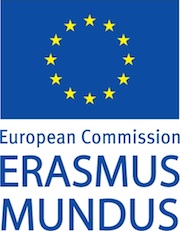| Important Dates: | |
|---|---|
| Application opens: | March 1, 2015 |
| Application closes: | May 15, 2015 |
| Notification of acceptance: | May 20, 2015 |
| Deadline for payment of registration: | June 1, 2015 |
| Arrival of participants: | July 6, 2015 |
| Start of event: | July 7, 2015 |
| End of event: | July 11, 2015 |
Fifth European Business Intelligence Summer School (eBISS 2015)
Invited Speakers & Tutors
-

Rafael Berlanga
Universitat Jaume I, SpainRafael Berlanga is a full-time professor of computer science at Universitat Jaume I, Spain, and leader of the Temporal Knowledge bases group. His current research concerns novel information extraction and text mining methods for performing business intelligence over very large resources such as the semantic web and social media, as well as their integration with corporate data warehouses. He has published more than 25 contributions to high-impact international journals, as well as numerous contributions to refereed international conferences. He has lead several R&D projects aimed at defining novel ways to include non-conventional data such as texts, XML and RDF data, into the multidimensional analytical perspective.
Email: berlanga@lsi.uji.es
Web: http://krono.act.uji.es/

Victoria Nebot
Universitat Jaume I, SpainVictoria Nebot obtained her Ph.D. in computer science from the Universitat Jaume I, Spain in 2013. She is currently a post-doctoral researcher in the Temporal Knowledge Bases Group (TKBG) in Universitat Jaume I. Her main research is focused on analysing and exploiting semi-structured and complex data derived mainly from the Semantic Web. Also, she is interested in text mining and information extraction methods that contribute to the growing of the Semantic Web.
Email: romerom@lsi.uji.es
Web: http://krono.act.uji.es/
Lecture: Bringing context-aware information to the corporate data warehouse
Modern business intelligence (BI) is currently shifting the focus from the corporate internal data to external fresh data, which can provide relevant contextual information for decision-making processes. Nowadays, most external data sources are available in the Web presented under different media such as blogs, news feeds, social networks, linked open data, data services, and so on. Selecting and transforming these data into actionable insights that can be integrated to corporate data warehouses are challenging issues that have concerned the BI community during the last decade. Big size, high dynamicity, high heterogeneity, text richness and low quality are some of the properties of these data that make their integration much harder than internal (mostly relational) data sources. In this lecture, we review the major opportunities, challenges, and enabling technologies to accomplish the integration of external and internal data. We also introduce some interesting use cases to show how context-aware data can be integrated into corporate decision-making. -

Toni Cebrián
Enerbyte, SpainToni Cebrián received his MSc in Artificial Intelligence from the Polytechnic University of Catalonia in 2010. He started his career back in 2000 working at Telefonica R&D developing management systems for elements of the telecommunication network. Then he started to move to data related positions working in projects creating dashboards and visualizations and data warehouses. With the explosion of Big Data Technologies he moved more and more into the personalization field working in all kind of recommender systems about music, telco products or "people you may know", when working at Tuenti. When in Softonic he created and managed the Data Science team working on several projects ranging from Text Analytics for recommenders, ad display selection and ontological databases. Now he works as Chief Data Officer at Enerbyte, a startup using smart meter data in order to provide insights and recommendations about efficient energy usage.
Email: tcebrian@enerbyte.com
Web: http://www.enerbyte.com
Lecture: Time Series Databases and Streaming Algorithms
The rise in the number of applications in the field of the Internet of Things demands a new approach for storing, retrieving and manipulating data in those use cases. Smart meters, sensors, thermostats and other devices share in common that they create data with an associated temporal component. Those devices are also of limited memory and so their measurements must be streamlined to external processing units. In this lecture we will talk about the different possibilities for storing, manipulating and analysing those data streams and related Big Data infrastructures and databases that allows us work in those domains. Use cases, live demos and exercises will be presented during the lecture. -

Matteo Golfarelli
University of Bologna, ItalyMatteo Golfarelli is Associate Professor at the University of Bologna, teaching Information Systems, Database Systems and Data Mining. He has published over 100 papers in refereed journals and international conferences in the fields of pattern recognition, mobile robotics, multi-agent systems, and business intelligence that is now his main research field. His research in this area covered most of the design issues related to Data Warehouse systems. In particular, he proposed a complete design methodology hinging on a graphical conceptual model, called Dimensional Fact Model. He is co-author of the book Data Warehouse Design: Modern Principles and Methodologies. His current research interests include distributed and semantic data warehouse systems Social Business Intelligence and BI on Big Data. He has been involved in several national and international research projects and he is actively involved in technology transfer projects with private and public companies, he is also mentor at CesenaLab an Italian startup incubator.
Email: matteo.golfarelli@unibo.it
Web: http://bias.csr.unibo.it/golfarelli/
Lecture: Social Business Intelligence: Architectures, Data Structures, and Methodologies
The huge quantity of information, talks, posts, and papers available on the web cannot be ignored by companies. Being aware in near-real time of hot topics and opinions about a product or a topic is strategic for taking better decisions. Unfortunately, this information is totally or partially unstructured, thus it is difficult to be exploited. Most of the commercial solutions are "closed" applications and most of the services are one-shot projects rather than stable monitoring systems that enable a limited exploitation of the information. Practitioners often refer to this family of tools as Opinion Mining software, Sentiment Analysis Software, or Brand Reputation Software. Many companies would prefer a solution that could be integrated in the enterprise information systems and that could be considered as yet another data flow to be included in the Business Intelligence platform and to be queried with the traditional tools that are well-known to the users. Social business intelligence is the discipline of combining corporate data with user-generated content to let decision-makers improve their business based on the trends perceived from the environment. Setting up a Social BI architecture requires contributions by several areas of computer science such as Information Retrieval, Text Mining, Database, Ontology and Artificial Intelligence The keynote will describe the features of a Social BI architecture, it will survey the research issues related to it and it will go into details about data modeling and methodological issues that allow to create BI like capabilities. -

Manfred Jeusfeld
University of Skövde, SwedenManfred Jeusfeld studied computer science from 1980 to 1986 at the University of Technology Aachen (RWTH), Germany. In 1992 he received his Doctoral degree in Natural Sciences from the University of Passau. In 1992 he returned to the RWTH Aachen as a senior researcher of the Information Systems Institute (Informatik V). He is the principal developer of the ConceptBase system, which is now used by several hundreds institutes and companies world-wide for designing information systems and metamodeling. From 1997 to 2013, he was assistant professor in the department Information Management (IM) of the Tilburg University, The Netherlands. Since 2013 he is lektor at the department of information technology, University of Skövde, Sweden. His research covers cooperative conceptual modeling, data warehouse quality management, metamodeling, method engineering, and repository systems. He is member of the ER steering committee (2011-2014) and associate information director for ACM SIGMOD. He is also the founder of CEUR Workshop Proceedings, a publication service for open-access proceedings of scientific workshops and conferences.
Email: manfred.jeusfeld@his.se
Web: http://conceptbase.sourceforge.net/mjf/
Lecture: Key performance indicators in data warehouses
Complex systems like enterprises are managed (or at least monitored) by collecting key performance indicators (KPI) from components and processes. Data warehouses are excellent tools to automate the data collection for the KPIs and producing reports about the current state of indicators. This lecture discusses various patterns of KPIs, links them to an SADT-like diagram and proposes a mapping to data warehouse designs that implements the KPIs. We shall also relate the KPIs to quality management and to maturity models such as the SEI maturity model. -

Wilinton Tenorio
ClearPeaks, SpainWilinton Tenorio received his degree in System Engineering from the National University of Callao, Perú in 2007. He started his career in Business Intelligence in Coritel (Accenture Technology Solutions) in Madrid, being involved in a BI implementation project for a multinational pharmaceutical company where he gained experience on the Enterprise BI Architecture and BI tools. After that, he joined ClearPeaks on 2010, being involved since then in different international BI implementation projects across Europe, Middle East and Asia as a BI Consultant and Project Manager. During this time he has acquired expertise in Data Warehouse, ETL and Reporting tools as well as extensive experience in business analytics applications such as Financial Analytics and Human Resources Analytics, complemented also with Project Management skills.
Email: wilinton.tenorio@clearpeaks.com
Web: www.clearpeaks.com

Eduard Gil
ClearPeaks, SpainEduard Gil received his MSc in Computer Science from the Polytechnic University of Catalonia, Spain. He started his career in Business Intelligence at ClearPeaks. As Business Intelligence Analyst he has been involved in projects for Oil & Gas Industries across different functional areas in Middle East. During this time he has acquired expertise in Data Modelling, Data Warehouse, ETL and Reporting tools. With the rise of Big Data he has been complementing his technical skills with Big Data technologies and its integration with the traditional BI.
Email: eduard.gil@clearpeaks.com
Web: www.clearpeaks.com
Lecture: Life at ClearPeaks, an overview to the most relevant projects
In this session we will profile some real life BI projects we have ongoing and take a look at the architectures and technologies we have deployed at these customers. In addition to the functional aspect of these projects, we will discuss where the tough challenges were and how we solved them. Live demos will be shown during the session. -

Alejandro Vaisman
Departamento de Informática,Instituto Tecnológico de Buenos Aires, ArgentinaAlejandro Vaisman received a BE degree in Civil Engineering, and a BCS degree and a Ph.D. in Computer Science from the University of Buenos Aires (UBA), Argentina. He has been a postdoctoral fellow at the University of Toronto (UoT), Canada in 2003, and visiting researcher at UoT, Universidad Politécnica de Madrid, Universidad de Chile, University of Hasselt, and Université Libre de Bruxelles. He has been a professor at UBA, and the Universidad de la República, in Uruguay. Between 2005 and 2010 he chaired the master's program in data mining at UBA. In 2013 he joined the Instituto Tecnológico de Buenos Aires, where he is currently a full-time professor. His research interests are in the field of databases, geographic information systems, business intelligence, and the semantic web. He has authored and coauthored many scientific papers published at major conferences and in major journals, and co-authored with Prof. Esteban Zimányi the book "Data Warehouse Systems: Design and Implementation", published by Springer in 2014.
Email: avaisman@itba.edu.ar
Web: http://www.itba.edu.ar/es/12160762
Lecture: Publishing OLAP Cubes on the Semantic Web
The availability of large repositories of semantically annotated data on the web is opening new opportunities for enhancing decision-support systems. In addition, the advent of initiatives such as Open Data and Open Government, together with the the Linked Open Data paradigm, are promoting publication and sharing of multidimensional data on the web. In this talk we will address the problem of representating multidimensional data using semantic web standards. Starting from the RDF data cube vocabulary (QB), we will discuss its limitations and the proposals to overcome them, in particular the QB4OLAP vocabulary. We will show how QB4OLAP allows representing on the semantic web most of the features usually present in data warehouse models, like the many kinds of OLAP hierarchies. During the talk we will show how we can produce a semantic web version of a data cube in RDF (the standard for metadata representation on the semantic web), and how we can query this cube using SPARQL (the standard query language for RDF). Exercises and demos will be used throughout the lecture to show the applicability of the approach. -

Panos Vassiliadis
Department of Computer Science and Engineering, University of Ioannina, GreecePanos Vassiliadis received his Diploma in Electrical Engineering and his PhD from the National Technical University of Athens in 1995 and 2000, respectively. He joined the Department of Computer Science & Engineering of the University of Ioannina in 2002. Prof. Vassiliadis has been involved with research in the area of data warehousing (metadata management, OLAP, and quite emphatically, ETL) since the late 1990s. He has also worked on top-k and context-based querying and web service management. Following a common thread in his work, he is currently investigating how the rigorous modeling of data, software and their interdependence can be exploited for the design, visualization and smooth evolution of data-intensive software ecosystems. Prof. Vassiliadis is the co-editor of the book “Fundamentals of Data Warehouses” (Springer). He has several publications in international journals and conferences and an active service to the scientific community as a reviewer and PC chair.
Email: pvassil@cs.uoi.gr
Web: http://www.cs.uoi.gr/~pvassil/
Lecture: Schema evolution for traditional databases and data warehouses
Like all software systems, databases are subject to evolution as time passes. The impact of this evolution is tremendous as every change to the schema of a database affects the syntactic correctness and the semantic validity of all the surrounding applications and de facto necessitates their maintenance in order to remove errors from their source code. The talk will provide a walk-through on different approaches to the problem of handling database and data warehouse evolution. The areas covered include (a) published case studies with statistical information on database evolution, (b) techniques for managing database and view evolution, (c) techniques pertaining to the area of data warehouses, and, (d) prospects for future research.
- Home page
- Organization
- Participants
- Related Events
- Organized by






